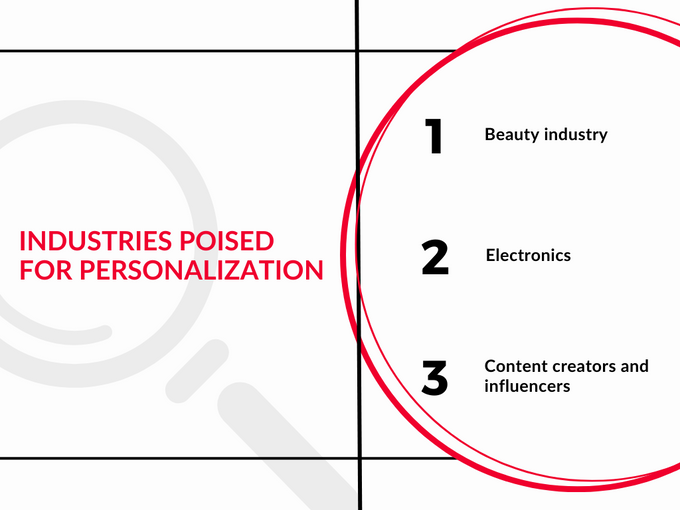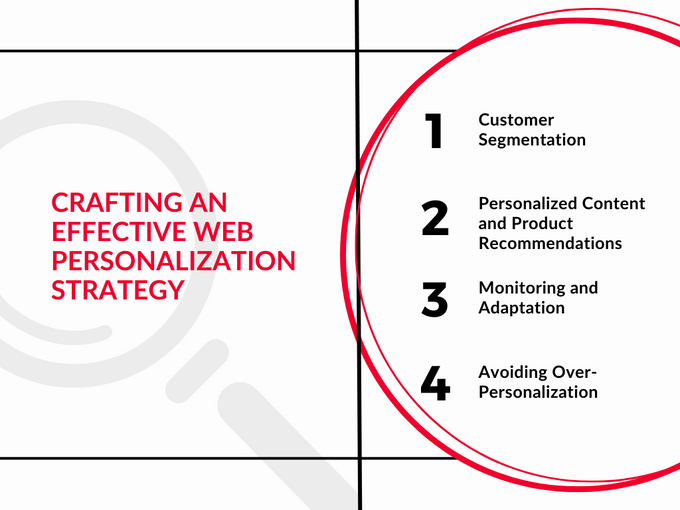Web Personalization: Improve Your eCommerce Store's Conversion Rates
Updated November 19, 2024

With millions of online stores vying for consumer attention, your business needs a powerful edge to stay ahead of the competition. That's where web personalization comes into play.
Below, we delve into the world of web personalization, exploring its nuances, importance, industry impact, key strategies, common pitfalls, recommended tools, and innovative approaches. By the end, you'll have a comprehensive understanding of how web personalization can supercharge your eCommerce conversion rates.
Meet the Expert
Jameela Ghann is a seasoned online store owner with over a decade of eCommerce experience. Apart from running Alora Boutique, she's also the marketing manager for Fera Product Reviews.
» Here's where to specifically apply personalization in your eCommerce store.
Unveiling the Power of Web Personalization
Web personalization is like having a skilled personal shopper who tailors your website's products and overall user experience to match individual preferences, behaviors, and even geographic locations.
It goes beyond basic segmentation and aims to create a hyper-personalized shopping journey for every visitor. But why is it so crucial for improving conversion rates?
Creating a Relevant Shopping Experience
Imagine you're shopping online from Canada, and you land on a website from the United States. You're excited, add several items to your cart, proceed to checkout, and then hit a roadblock: none of those items ship to Canada. Frustration sets in, and you abandon your cart, never to return. This scenario illustrates the importance of web personalization.
Web personalization can help you identify a visitor's location and tailor your product offerings accordingly.
For example, a website should showcase the items available for shipping to Canada only. When customers feel that the shopping experience is relevant to them, they're more likely to complete their purchases, thus boosting conversion rates.
Industries Poised for eCommerce Personalization
The impact of web personalization isn't limited to a specific niche. It has the potential to revolutionize multiple industries. Here are a few sectors that stand to benefit the most:
1. Beauty Industry
In the beauty industry, where customers have unique skin types, tones, and preferences, personalization is the future. Predictive web personalization can analyze these factors and recommend products tailored to each individual.
For example, a visitor with dry skin may see moisturizers, while someone with oily skin may receive recommendations for mattifying products.
» Want to impress your customers? Give them personalized product recommendations.
2. Electronics
As remote work and content creation become even more prevalent, personalizing electronic products and accessories will be pivotal. Personalization can factor in a visitor's tech-savviness, the stage of their content creation journey, and their specific needs.
For instance, a visitor with an established YouTube channel might receive recommendations for advanced cameras, while a novice might be shown beginner-friendly equipment.
3. Content Creators and Influencers
Personalization isn't just for products—it's also invaluable for content creators and influencers. By gathering data on their social media presence, content focus, and engagement levels, platforms can tailor their experiences. This might involve offering unique features or resources tailored to their current career trajectory or content niche.
Crafting an Effective Web Personalization Strategy
Now that we've established the significance of web personalization let's delve into the key elements of an effective strategy:
1. Customer Segmentation
Customer segmentation is at the core of web personalization. It involves dividing your audience into distinct groups based on shared characteristics, behaviors, or preferences. Collecting relevant data is essential, and this includes basic information like age and location. Here's how you can use it:
- Age: Tailor content and product recommendations to different age groups.
- Location: Show products available in the visitor's region.
- Engagement Level: Differentiate between casual visitors and loyal customers.
- Social Media Data: For influencers, integrate data from their social media accounts.
- Email Behavior: Analyze email engagement to understand customer interests.
» Learn how to implement audience segmentation and boost your eCommerce store.
2. Personalized Content and Product Recommendations
One of the pillars of web personalization is delivering personalized content and product recommendations to your visitors. To execute this effectively, use:
- Segment-Based Recommendations: For highly engaged customers, offer unique product recommendations or exclusive discounts.
- User-Generated Content (UGC): Encourage visitors to contribute product reviews or recommendations and use this content to inform your personalization strategy.
- Behavioral Data: Analyze clickthrough rates, engagement with emails, and time spent on pages to refine your recommendations.
- Cross-Channel Marketing: Export segments of highly engaged customers to social media platforms for targeted marketing campaigns.
3. Monitoring and Adaptation
Web personalization is not a set-and-forget strategy. It requires ongoing monitoring and adaptation. Here's what you can focus on:
- Regular Updates: Set intervals for reviewing and updating your personalization strategies to reflect changing customer behaviors.
- Feedback Loop: Pay close attention to customer feedback and complaints regarding personalization. Adjust your strategies accordingly to enhance the customer experience.
- Testing and Performance Monitoring: Avoid launching major personalization changes without A/B testing. Monitor performance metrics to ensure your efforts are paying off.
4. Avoiding Over-Personalization
While personalization is powerful, overdoing it can have a negative impact. Customers may feel their privacy is invaded or that the experience becomes too intrusive. Striking the right balance is crucial to avoid turning customers away.
Recommended Tools for Web Personalization
To implement web personalization effectively, consider leveraging the following tools and platforms:
- Notify Visitors: This tool specializes in dynamic content, enhancing user engagement through personalized experiences.
- Push Owl: Ideal for implementing push notifications on your website, ensuring that visitors receive personalized alerts and updates.
- VAJRO: A mobile site builder designed to support highly personalized mobile experiences.
- Landing Page Builder (e.g., Beta): Create landing pages tailored to specific customer segments, ensuring that each visitor sees content and products that resonate with their needs.
- Google Analytics and Email Marketing Platforms: For smaller businesses, Google Analytics can provide valuable insights. Email marketing platforms like Omnisend and MailChimp can be used for basic personalization, such as segment-specific email campaigns and targeted product recommendations.
» Have you tried Vector Search? Here's how you can use it to optimize your store.
Innovative Web Personalization Strategies
Beyond the foundational principles of web personalization, consider a personalized content strategy to elevate your conversion rates. Creating personalized content doesn't have to be a time-consuming process, but even with AI assistance, it can be resource-intensive.
That's why shifting your content strategy to focus on addressing specific customer problems can be highly effective. Instead of solely targeting keywords, craft content that genuinely addresses your audience's pain points and aligns with their journey.
For instance, if you sell organizing products, create content centered around unique organizational challenges and solutions, tailored to various customer segments. The goal is to provide value while subtly promoting your products.
The Future of Web Personalization
As technology continues to advance and consumer expectations evolve, web personalization will only become more critical. Mastering the art of personalization can enhance your site navigation, helping you boost your e-commerce conversion rates while providing a truly exceptional shopping experience for your customers.
Whether you're in the beauty industry, electronics, or any other sector, embracing web personalization can set you on the path to e-commerce success. So, take the plunge into the world of web personalization and watch your business thrive in the era of hyper-personalized shopping.
» Implement these strategies to make the most of personalized digital marketing.






